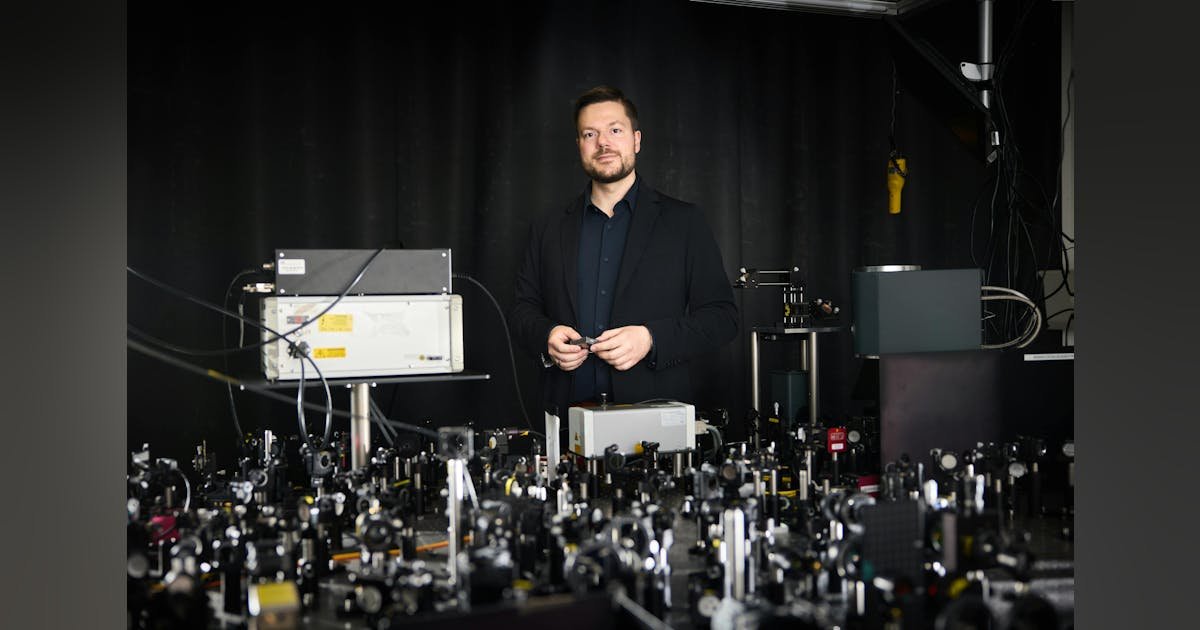A paradigm shift for active nanophotonics
What does this work mean for the field of nanophotonics and photonic integrated circuits (PICs), optical computers, and quantum comms? “We believe our ‘temporal symmetry breaking’ concept is a paradigm shift for active nanophotonics,” says Tittl. “Traditionally, researchers tuned resonators by altering the material, which often introduces unwanted energy loss. Our approach is fundamentally different because we are controlling the radiative coupling—the pathway between the resonator and the light.”
For PICs and optical computers, this opens the door for low-loss, high-speed optical switches that avoid the parasitic losses affecting current technologies—and will lead to much faster and more efficient data processing. “This level of precise control of light-matter interactions is critical for advancing quantum communication networks and even exploring exotic concepts like photonic time crystals,” says Tittl.
The coolest aspect of this work for Tittl is its core concept: Achieving a perfect optical balance within a system that’s structurally asymmetric, and then being able to disrupt this balance on demand at ultrafast timescales. “Our ‘aha’ moment was realizing that we could use this structural asymmetry to our advantage,” he says. “By making the rods different geometrically but identical optically, we obtained an entirely new mechanism for controlling light.”
Seeing the first experimental results from the time-resolved spectroscopy “was incredible,” Tittl says. “We watched in real time as a strong resonance appeared out of nothing within picoseconds when the laser pulse hit, and then vanished again. It was definitive proof that our approach of temporal symmetry breaking worked exactly as predicted, and confirmed we were controlling the light coupling without introducing significant losses.”
Proof of concept
The team faced two main challenges for this work. First, the fabrication required extreme precision. To achieve perfect optical cancellation despite the geometric asymmetry, the dimensions of the silicon nanorods must be exact. “Manufacturing our metasurfaces in a cleanroom was a significant undertaking,” Tittl points out.
The second challenge was measuring the ultrafast temporal behavior. “These switching events happen incredibly fast—on a subpicosecond timescale—and we needed a sophisticated time-resolved spectroscopy setup to capture these moments and prove our concept actually worked as predicted,” he adds.
This work is a fundamental proof of concept, “so the next steps will involve translating this technology toward practical applications and expanding its capabilities,” says Tittl. “While we used silicon, the principle is universal and we plan to apply it to other low-loss dielectric materials such as gallium arsenide. We’re also investigating even faster switching mechanisms based on nonlinear optical effects like the Kerr effect, which could push the switching times even shorter and expand its utility for ultrafast applications in next-generation optical devices.”
FURTHER READING
A. Aigner et al., Nature, 644, 896–902 (2025); https://doi.org/10.1038/s41586-025-09363-7.

